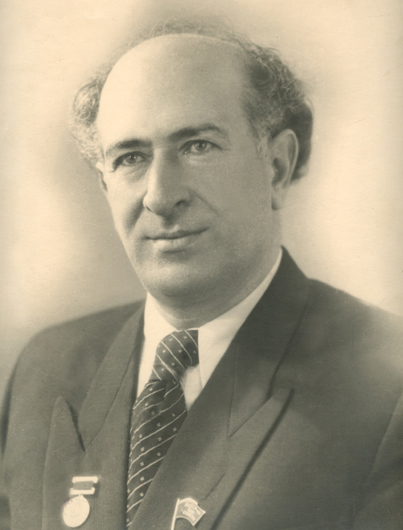Founder of the Azerbaijani professional vocal art, People's Artist of Azerbaijan Bulbul
 The founder of the Azerbaijani opera singer, folk music performer, and one of the founders of vocal arts and national musical theatre, professor, People's Artist of the USSR Mammadov Murtuza Meshadi Rza oglu (Bulbul) was born on 22 June 1897 in Shusha. He received his first musical education in 1907 at the age of 10 in Shusha music school. From childhood, the residents of Shusha called Murtuza Bulbul because of his enchanting voice and unique style of singing. The name Bulbul, given to him in childhood, later became an artistic pseudonym reflecting his brilliant talent.
The founder of the Azerbaijani opera singer, folk music performer, and one of the founders of vocal arts and national musical theatre, professor, People's Artist of the USSR Mammadov Murtuza Meshadi Rza oglu (Bulbul) was born on 22 June 1897 in Shusha. He received his first musical education in 1907 at the age of 10 in Shusha music school. From childhood, the residents of Shusha called Murtuza Bulbul because of his enchanting voice and unique style of singing. The name Bulbul, given to him in childhood, later became an artistic pseudonym reflecting his brilliant talent.
Bulbul began his stage career in 1916. The young artist, who studied Azerbaijani mughams and socialised with famous Shusha singers, soon became famous in Transcaucasia and Central Asia. In 1920, Uzeyir Hajibeyli invited 23-year-old Bulbul to Baku to perform the role of Kerem in the opera ‘Asli and Kerem’. After that he moved to Baku and performed on stage in various roles as a soloist at the Azerbaijan State Academic Opera and Ballet Theatre.
In 1921, he entered the Azerbaijan State Conservatoire to study at the vocal class of F. Polayev, and then continued his education with Professor N.I. Speransky. In 1927 Bulbul graduated from the Baku Conservatory and in the same year was sent for four years to Italy to study among the first Soviet singers at the famous Milan Conservatory. Upon his return, he began teaching at the Azerbaijan State Conservatory. In 1932, on his initiative, the Scientific Research Music Cabinet was established at the Azerbaijan State Conservatory to study Azerbaijani folk music. In 1933, Bulbul took part in the first All-Union contest of vocalists and became its laureate.
Uzeyir Hajibeyli wrote the epic-heroic opera ‘Keroglu’ on the plot of the Azerbaijani epic especially for Bulbul's voice and performance. In 1938, U. Hajibeyli's opera ‘Keroglu’ was staged at the State Academic Bolshoi Theatre in Moscow.
Bulbul was the first Azerbaijani professor to reach the pinnacle of musical teaching and vocal research. Bulbul was the initiator of the Ashug congress held in 1938-1961. He developed the theory of vocal art as well as special methods on song performance. He was the editor and compiler of the first collections of world classics and Azerbaijani folk songs published in Azerbaijan. He actively participated in the search for vocalists.
Bulbul was chairman of the jury of the competition of classical singing of the peoples of the East at the VI All-Union Moscow Festival in 1957.
Bulbul created a new vocal school in Azerbaijan, combining the best methods of the Azerbaijani national singing art of mugham with Russian and European vocal schools. Thus, as an innovator, he was able to exert an effective influence on the singing art of the peoples of Transcaucasia, Central Asia, Near and Middle East.
People's Artist Bulbul died on 26 September 1961 in Baku and was buried on the First Alley of Honor.
Recommended literature:
- Bizim Bülbül - dünyanın Bülbülü / red. : N. Hacızadə. - Bakı : Nağıl evi, 2004. - 530 s.
- Bülbül - vokal sənətinin zirvəsidir = Бюль-Бюль - вершина вокального искусства / Bülbülün memorial muzeyi ; ön sözün müəl. A. R. Məmmədova. - Bakı : Çaşıoğlu, 2006. - 724 s.
- Qarayev, Telman Fərman oğlu. Sənətin keçdiyi yollar / T. F. Qarayev ; red. R. F. Zöhrabov ; Azərbaycan Respublikası Mədəniyyət və Turizm Nazirliyi. - Bakı : Qoliaf NE MMC, 2011. - 488 s.
- Həsənova, Cəmilə İsmayıl qızı. Bülbül (Murtuza Məmmədov) / C. İ. Həsənova. - Bakı : Şərq-Qərb, 2017. - 128 s.
